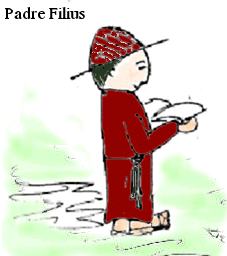
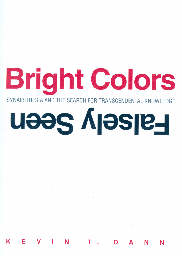
And for my Good Readers, here’s the new reviews and articles for this month. The ARJ2 ones are new additions to the top of A Reader’s Journal, Volume 2, Chronological List, and the ART ones to A Reader’s Treasury.
1.) ARJ2:
Bright Colors, Falsely Seen by Kevin Dann
There is much in this book to be learned about the human being and how the senses and memory
are organized. In many ways it is a reference book to understanding the origin of many important
concepts in the history of humanity: how the concept ontogeny recapitulates phylogeny was first
formulated, how eidetic imagery and synaesthesia are usually found together, how Jules Millet
first coined the word synaesthesia, and many other unique advances in understanding human
consciousness are collected in one convenient book.
[page 164] If these syncretic forms of perception [synaesthesia and
eideticism] do indeed signal something about the evolution of human
consciousness, we have not as yet fathomed what that is.
Perhaps not, but with Kevin Dann's book, we can begin to get our arms around the
problem in a more comprehensive way than ever before.
Read the Review at:
http://www.doyletics.com/arj/bcfsrvw.htm
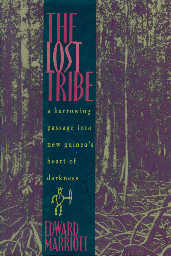
2.) ARJ2:
The Lost Tribe by Edward Marriott
Its subtitle, "A Harrowing Passage into New Guinea's Heart of Darkness," tells us succinctly
what the book is about. A journalist white man tracks down a lost tribe newly appearing out of
the mountainous jungles of deepest New Guinea.
Herein is the tale of his treacherous trek and his
encounter with that rarest of humans: a small tribe of 79 people isolated from civilization since the
beginning of time. He will get a book from this encounter. What will they get?
Read the Review at:
http://www.doyletics.com/arj/tltrvw.htm
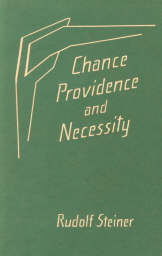
3.) ARJ2:
Chance, Providence, and Necessity by Rudolf Steiner
How does one have freedom in a world in which karma exists?
Doesn't the necessity of one's
karma eliminate the possibility of chance? And if so where does "the kindly care of God," as my
Collins dictionary defines providence, fit into the scheme of things?
Steiner answers all these
questions and more in the short 148 pages of these eight lectures.
Read the Review at:
http://www.doyletics.com/arj/cpanrvw.htm
4.) ART:
Magic in Action
by Richard Bandler
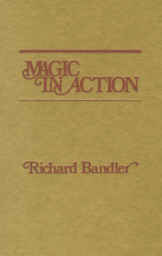
Humor and quickness — two words that describe Bandler. He does the therapy in seconds, but
indulges himself for many minutes so that he can charge for the session, so that he can charge up
the therapists, can charge them up to get them moving out of their pearl-lined shells into other and
more fun-filled worlds.
Here's another example of his humor and quickness:
[page 162] (Laughter) Well that takes care of that. Another sixty seconds of
therapy. If you know what you're doing, therapy doesn't take that long.
Read the Review at:
http://www.doyletics.com/art/
miaart.htm
5.) ART:
Using Your Brain — for a CHANGE
by Richard Bandler
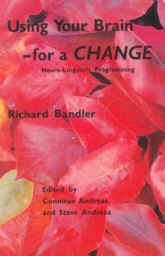
Richard Bandler was the quintessential smart ass, as the title textually and graphically illustrates,
but he always manages to fill his seminars and keep people riveted to their seats, as much as one
can be riveted while one is uproariously laughing from one moment to the next.
Steve and
Connirae Andreas have compiled a melange of his seminars, tapes and workshops into a coherent
whole and managed to capture the elfin Bandler at his best.
Read the Review at:
http://www.doyletics.com/art/
uybcart.htm
6.) ART:
Living in a Wild Garden
by Roger Banks
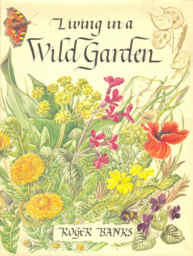
In this book, full of brightly colored drawings of wild plants and flowers, Roger Banks takes us on
a culinary tour of the weeds that surround our houses.
If you're ready to swear off insecticides
and herbicides and take a walk on the wild side, then this book is for you.
Read the Review at:
http://www.doyletics.com/art/
liwgart.htm
7.) ART:
The Essays of Francis Bacon
by Francis Bacon
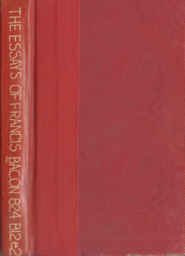
Why read essays written back in 1600 AD? The guy obviously doesn't know how to write good
English - look at the stilted phrasing and obscure grammar he uses! Well, consider this a bit o
homework, dear Readers, with an emphasis on work. Like school homework, it will prepare you
for the next day's activities. Here's a sample quote to scare you off completely:
[page 88] After these two noble fruits of friendship (peace in the affections,
and support of the judgment), followeth the last fruit; which is like the
pomegranate, full of many kernels; I mean aid and bearing a part in all
actions and occasions. Here the best way to represent to the life the manifold
use of friendship is to cast and see how many things there are which a man
cannot do himself; and then it will appear that it was a sparing speech of the
ancients, to say, that a friend is another himself; for that a friend is far more
than himself. >
To Read the full review anyway, in spite of my warnings to the contrary:
Read the Review at:
http://www.doyletics.com/art/
tefbart.htm
8.) ART:
Myths, Models, and Paradigms
by Ian G. Barbour
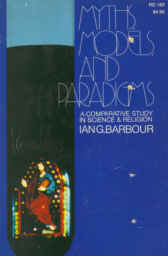
When Groucho said, "I would not join a club that would have me as a member," what did he
really mean?
What does everybody mean when they talk about paradigms?
Do you feel a little left
out, not knowing a paradigm from a parachute? Want to learn what a paradigm really is so you
won't have to pretend to know from now on?
For answers to these and other questions you may have not thought about, read the Review at:
http://www.doyletics.com/art/
mmapart.htm


